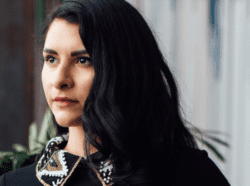In celebration of Native American Heritage Month, Women of Silicon Valley asked Native folks of all genders in STEM to share their stories with our followers, and 18 scientists, technologists, and educators (very generously) obliged.
These 18 people have submitted narratives of embracing Native identity, of decolonizing the whitewashed miseducation and misappropriation of Indigenous culture and histories, and of courageously striving to elevate both themselves and their communities within systems that have historically contributed to their erasure.
As feature Johnnie Jae puts it, “Native American Heritage Month is a bittersweet time for many of us; one month just isn’t enough time to make the progress we want to make.” So today and everyday, we seek to elevate and re-affirm Native voices. We’re deeply honored to share these eighteen.
In alphabetical order:
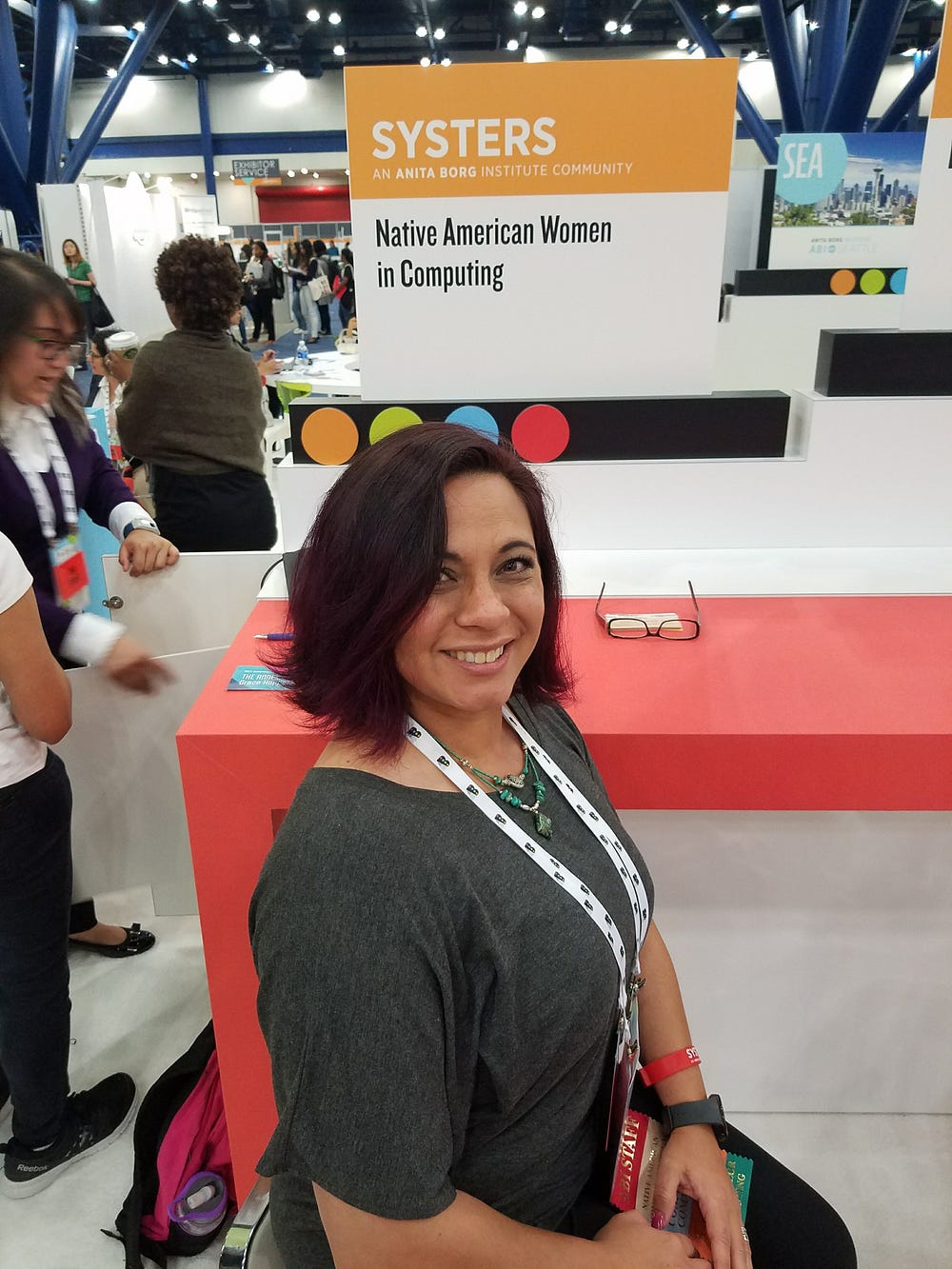
1. Andrea Delgado-Olson
Native Affiliation: Ione Band of Miwok Indians
is the Program Manager for Systers and GHC Communities at Anita B.org, and Founder of Native American Women in Computing.
What’s a challenge you’ve faced and how did you get through it?
Getting over imposter syndrome and being an advocate for recruiting efforts in the Native community for tech opportunities. I often second-guess my worth to be a leader of a community. I seek support from my membership, and we have a very close relationship. I am very grateful to them for their support and encouragement. I can continue to lead with confidence when I know my community supports my efforts. In turn, they know I will do the same for them and be available when they need me.
What’s something you’ve done that you’re really proud of?
Learning my native language, Miwok.
What’s something that’s been on your mind this Native American Heritage Month?
Learning how to cook better traditional Native American dishes.
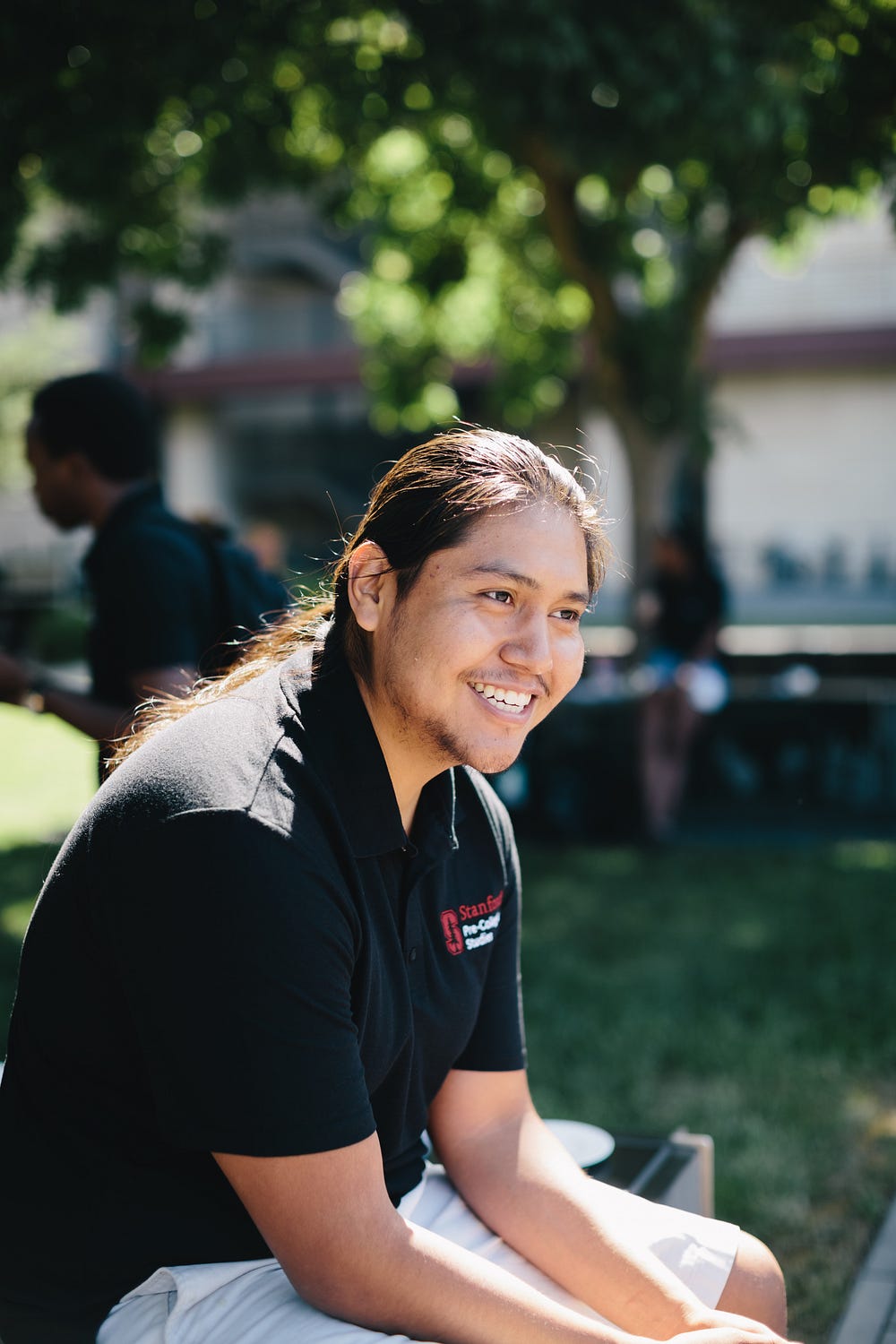
2. Corey Ashley
Native Affiliation: Diné (Navajo)
Corey Ashley is senior at Stanford studying Science, Technology, & Society. He grew up in Sanders, Arizona, a small community on the Navajo reservation. He has a passion for intersecting his Native identity with tech while representing his community. He has done work to aid in Diné cultural and language revitalization among his tribe while in college. Corey hopes to continue this work to ensure Diné knowledge and ways kept.
What’s a challenge you’ve faced, and how did you get through it?
It’s an ongoing and never-ending challenge to be at a place where few people from my background make it. I’m talking about being an Indigenous student at Stanford University. We make up around 1% of the student population here on campus. That one percent is further broken down into Indigenous students who grew up with similar conditions I faced growing up on the rez in Sanders, Arizona. Stanford and home are polar opposites, and it took me awhile to internalize what that meant. I was not aware of it when I first came to Stanford as a freshman in 2014.
When it comes to understanding what it means to be a contemporary Indigenous person, a lot of my Stanford classmates and instructors lacked awareness. I was expected to know everything there was to know about Native people right off the bat. Not even just about my tribe, I was obligated to be the voice of ALL Indigenous people. This was a lot to carry on top of the high academic bar set at this institution, plus the transition from a struggling community to a privileged context. I was still trying to figure out my identity as an Indigenous person while being the cultural token and involuntary expert whenever Natives came up. I eventually found my footing and the ability to articulate what I was experiencing at Stanford.
There were some very mortifying situations I endured as student. I remember once being so frustrated to the point that my hand was shaking. I was the only Native in the room, and my points were being invalidated by non-Natives when I was explaining the legacy of exploitation of Indigenous people. I feel like no one will ever understand what it’s like to an Indigenous student here, unless they experience it. There are things that we experience that other students don’t have to think twice about because the system is built to accommodate them. The resilience of my Diné ancestors is how I made it through and why I am still here. My family in the Native community here are a part of how I’m able to continue as well.
“I was expected to know everything there was to know about Native people right off the bat. Not even just about my tribe, I was obligated to be the voice of ALL Indigenous people. This was a lot to carry on top of the high academic bar set at this institution, plus the transition from a struggling community to a privileged context.”
What’s something you’ve done that you’re really proud of?
I am really proud of the Android application, “Diné Adóone’é,” I created with the help of other Indigenous students here at Stanford. It’s an app that tells Diné people how they’re related through their clans using the Navajo language, which is how the Diné traditionally express kinship. During freshman year, I had the idea of the app while taking Navajo Language. I worked with other Native students who are skilled in Android development, Oliver Bear Don’t Walk IV and Gracie Young. It’s the first project I engaged in that incorporated my identity with tech. I am really proud of finishing this project because it’s the start of how I want to help my community. It is the perfect example of Indigenizing technology as a method to solve problems that Diné communities are facing. In this regard, I address the culture and language loss that is imminent.
What’s something that’s been on your mind this Native American Heritage Month?
I’m thinking about all the amazing things that Indigenous people are doing. Making movies, making music, building apps, Indigenizing the academy, engaging in grassroots activism, creating companies, etc… they are Indigenizing all kinds of spaces! I think it’s incredible to see them carry their identities with them in whatever they engage in. I’m very proud of the Natives who persevere through the rough path that is present when navigating careers/opportunities that were historically unaccommodating and exploitative toward us. I know for a fact that they had to go through some difficulties to get where they are today. Keep uplifting our narratives, we have the ability to take our identity and experiences anywhere. Walk in beauty my friends. Nízhoníyee’.
“I’m very proud of the Natives who persevere through the rough path that is present when navigating careers and opportunities that were historically unaccommodating and exploitative toward us.”

3. Danielle Forward
Native Affiliation: Pomo
is a Product Designer at Facebook, designing for emerging markets on Internet.org. She was born and raised in Santa Rosa, California, and moved to San Francisco, where she graduated as valedictorian with her BFA in Interaction Design from California College of the Arts. During college she had two internships at Facebook, both on separate teams for Internet.org.
She is also the founder of Natives Rising, a website dedicated to highlighting Native American role models in tech and fostering mentorship connections for Natives in tech and Native students.
What’s a challenge you’ve faced, and how did you get through it?
It took me 10 years to graduate college with my Bachelor of Fine Arts (BFA.) When I say this to people, it’s not immediately obvious why, but there’s a lengthy historical reason. I’m at the end of a long line of inherited poverty and trauma, when only a few generations ago, everything was forcefully (and many times, violently) taken from my Native American ancestors. As a result, my great, great grandparents grew poorer and poorer as immigrant Caucasians grew richer from the gold they stole from this land. All laws and government institutions were biased in favor toward the Caucasians that forced those systems to exist here, and my relatives were forced into poverty, violence, and despair. I’m at the end of that line. My family inherited that poverty as their very starting point, at birth — and they struggled to slowly reclaim decent standards of living for decades since. My mother worked hard for this progression, raising my brother and I on her own.
“I’m at the end of a long line of inherited poverty and trauma, when only a few generations ago, everything was forcefully (and many times, violently) taken from my Native American ancestors.”
Now in the present day, we all know how expensive a good college education is. I did a lot of research to see how I could incrementally make progress towards my education while keeping costs low. My mom couldn’t help me, and my dad wasn’t in my life. So I used every strategy possible. I went to community college first and transferred to a 4-year college later, because at community college if you use the BOG waiver in California, it’s basically free. I lived with my mother to save on rent. I worked full-time while I took one community college class or two at a time. I kept focused on each checkpoint and all the prerequisites, slowly, until I reached the next milestone. When you’re forced to go to college as slowly and incrementally as I did, working full-time to pay for yourself — it takes double, triple the time.
Years and years went by. Things started to get easier as I started building more skills, work experience, and a broader network of friends and colleagues. I found that because I was kind to people, they wanted to help me — bend the rules so that my intense schedule would be a bit easier. I found that when I showed my passion and sincerity, people wanted to give me opportunities. Many times, by showing people who I really was, showing compassion, being a good friend, and showing my determination for my goals, people would offer me opportunities that weren’t there before.
Because I was always short on time, balancing work and school, I started finding ways to maximize every second. I picked up zen buddhist philosophy and started learning about meditation to improve my focus, decrease anxiety, and decrease my attachment to things that kept me distracted. It helped immensely, almost more than any other strategy I’ve ever practiced. Specifically, I read a lot of books by Thich Nhat Hanh. Most importantly, as a woman, Zen Buddhism helped me detach myself from patriarchal constructs in my mind. I had found out a lot of my time was spent thinking about boys, dating, or my physical appearance as a female — and it wasn’t serving me, and it wasn’t serving my goals. Zen Buddhism helped set my attention free, and as a result, I reclaimed more of my time. Eventually, during design school, one of my best friends helped me get my first design job (again, by trying your best to be a kind person, people want to help you.)
After working a few years as a product designer, I started attending my first semester at CCA when I interviewed for a product design internship at Facebook. I accepted the offer and started the following summer in 2015. I did absolutely everything to get another offer from them. Literally, my life depended on it. I couldn’t afford to keep going to college without the money I earned from that internship. I couldn’t afford to not be the absolute best. I gave it everything I had, and I got another internship offer — which meant I could keep going to college, for my last and final year of the BFA I had been working on for 9 years. During my time at California College of the Arts, I didn’t hang out with friends very much, if at all. I didn’t have time to go out. I was always studying or working. I had to make the most of every day, because I took too big of a risk on myself to not deliver on the promise that I was worth investing in.
“I had to make the most of every day, because I took too big of a risk on myself to not deliver on the promise that I was worth investing in.”
Design school is expensive as hell, and I had taken out student loans in my name, by myself — my mother was only able to sign for one loan for two semesters. Everything else was out of my pocket. I had over $100,000 in student loans in my name, along with thousands in credit card debt that financed a lot of my early twenties. Most of my peers did not have this problem. As a result, I had to keep working full-time, or pick up contract work here and there during the school year. I used low income housing. I used food stamps. It was because of my two Facebook internships that I was able to finally focus on school full-time at CCA, and not have to split my attention with work like I always did. I lived on the money I earned from my internships so I could focus on school full-time. It was everything to me. I was so grateful, and still am, for Facebook. I received a full-time offer last summer in 2016, and just completed my final year of my BFA this May. After 10 years, I finally graduated with my BFA in Interaction Design — as valedictorian.
“After 10 years, I finally graduated with my BFA in Interaction Design — as valedictorian.”
What’s something you’ve done that you’re really proud of?
I am incredibly proud to have graduated valedictorian from CCA after working so hard for a decade to make college a reality for myself, and pay for it on my own. I started with one or two community college classes at a time.
I am incredibly proud to work at Facebook, especially on a team I fell in love with since day one.
I’m proud of my dedication, my determination, my resolve to never give up on investing in myself, even if it takes the rest of my life.
I’m proud that I made my interaction design thesis about economic empowerment for Native Americans, and that I told my entire class that’s who I was.
I’m proud I got to meet and interview so many wonderful Native people in tech and hear their stories, and use my thesis work as a place of inspiration for other indigenous people.
What’s something that’s been on your mind this Native American Heritage Month?
I love that we’re reclaiming this month. “Thanksgiving” is pretty problematic for me — you know, the completely false narrative about the pilgrims and Indians in peace and all that. When I was doing my thesis on economic empowerment for Native people, my professor started calling it “Thankstaking,” which is way more accurate. I’m really disgusted with the false history that’s taught in the US. As a Native girl, growing up, I heard from my mother and grandmother the real horrific stories, the real history, because we passed it down in our family. We knew what happened because it happened to us. But other kids at my school didn’t have that experience. All they knew was the propaganda in the textbook and on TV. I think we need to reclaim more of that truth.
We need to read about what really happened on this land, everyone does, but especially Native people — because we need to reclaim our pride.
We need to know that we’re not bad, worthless, or any less intelligent and talented than anyone else.
We need to see what really happened to our people — because then, you’ll finally understand how your family and your circumstance became the way it is today. You’ll know it’s not because you’re inherently lesser, less capable, or less intelligent, but that things were taken from your family, and you were forced to start at the very bottom.
Right now, I’m in the middle of reading Bury My Heart at Wounded Knee, which I highly recommend. It is both the saddest and most liberating book I’ve ever read. It is true Native American history. Finding out what happened to your tribe, your ancestors, reclaiming the truth — that’s how to celebrate Native American Heritage Month.
“We need to see what really happened to our people — because then, you’ll finally understand how your family and your circumstances became the way they are today. You’ll know it’s not because you’re inherently lesser, less capable, or less intelligent, but that things were taken from your family, and you were forced to start at the very bottom.”
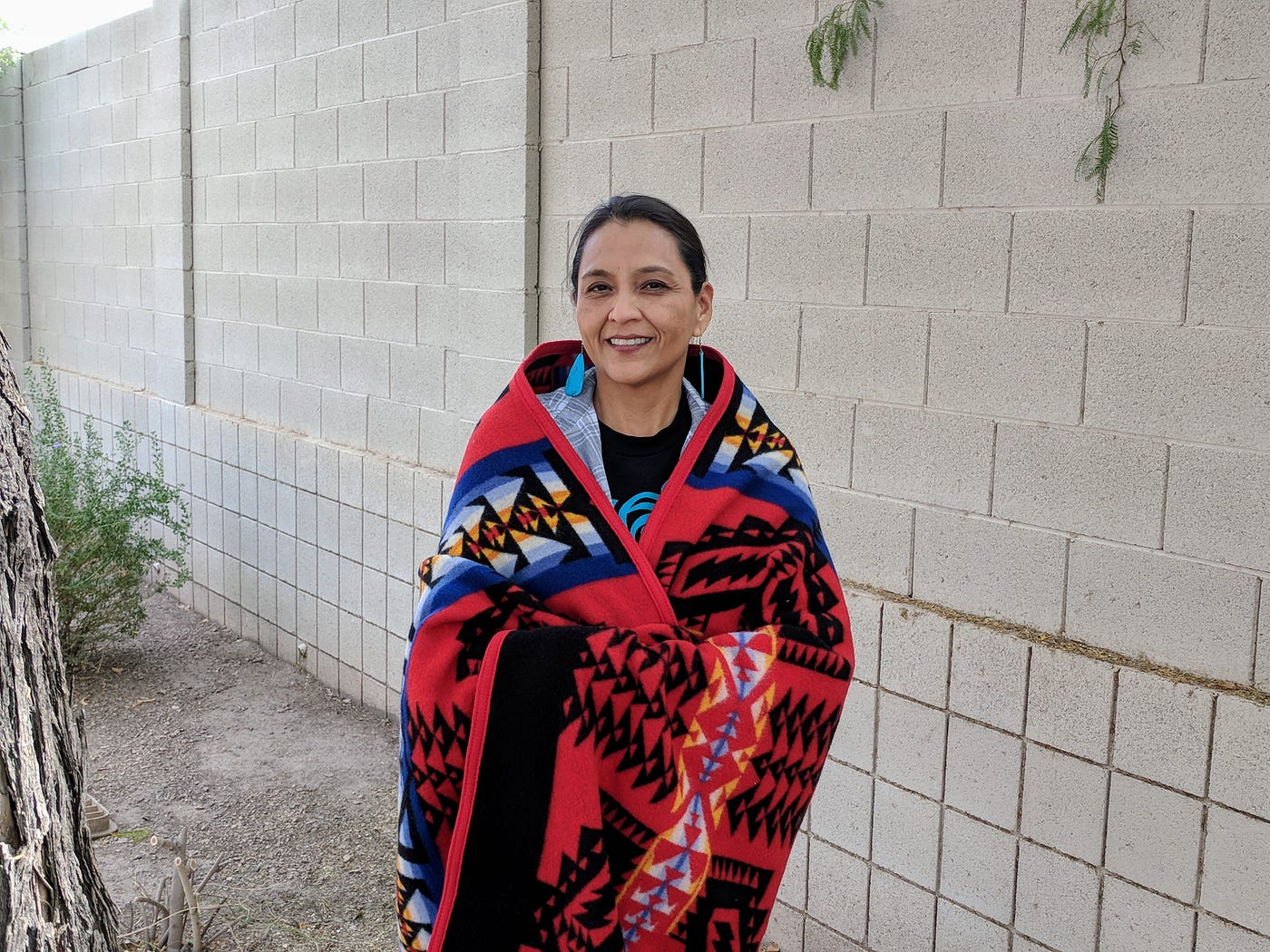
4. Dezbah Hatathli
Native Affiliation: Diné (Navajo)
Dezbah Hatathli is Navajo, originally from the Navajo Nation and now resides in Gilbert, Arizona. She studied Anthropology with Native American Studies at Dartmouth College in Hanover, New Hampshire. Her work experience is vast and varied, and has previously held positions as an Archaeologist, Crime Scene Specialist and PD/FD/EMS Dispatcher prior to coming to Waymo as a Vehicle Operations Specialist. Her hobbies include Native American beadworking, sewing, traditional pow wow dancing, traveling and enjoying time with her 7-year old son Brody.
What’s a challenge you’ve faced, and how did you get through it?
Making the decision to leave my family, home and cultural lifestyle to attend Dartmouth College was one of the greatest challenges I’ve faced, but it has shaped me into being the confident and adventuresome person I am today. I am very appreciative of my family for always supporting me and keeping me focused.
What’s something you’ve done that you’re really proud of?
I’m very proud that I am carrying on the traditions of my mother and grandmother, who both taught me the value of hard work as well as the beauty in creating arts and crafts. From them I’ve learned to make moccasins, sew and bead and prepare traditional foods.
What’s something that’s been on your mind this Native American Heritage Month?
I am very proud of my heritage and like to share my family’s history and my experiences to others. One of my grandfathers was a Navajo Code Talker and my maternal grandparents served in the US Navy and the Women’s Army Corps. I am thankful for my parents and my family for helping shape me into the person I am. During this month it’s important to recognize all the contributions Native People have made and to also acknowledge the diversity of each tribe — there’s so much to learn about and from each other.

5. Gracie Young
Native Affiliation: Cherokee
Gracie Young is a senior studying Computer Science at Stanford University. She loves making things, from mobile apps and robots to floor rugs crocheted from recycled tech t-shirts. At school, she co-led Women in Computer Science, managed the Stanford Powwowwebsite, and served as a Teaching Assistant for the Android development class. She’s had the opportunity to intern at Google, Qualcomm, and the US Navy.
What’s a challenge you’ve faced, and how did you get through it?
I’ve wanted to learn how to speak Cherokee since I was little. My friend Constance Owl worked with the Special Languages department at Stanford to bring the Cherokee Language class to campus my sophomore year. She found our wonderful professor, a Native speaker and tribal elder, Tom Belt, who teaches at Western Carolina University and video-chats in twice a week to our language class.
Cherokee is difficult to learn. It is descriptive, precise, and complicated with a polysynthetic structure and 12 different pronoun sets. BlueJeans lets us learn Cherokee from across the country, but it isn’t quite the same as learning in person. Cherokee isn’t supported by Google Translate, and our teachers have to make almost all their own teaching material. Although there is currently only one year of the language offered at Stanford, I’ve been working to practice the language by crashing the weekly section and speaking with my brother, who just joined as a freshman! I’m passionate about exploring the ways tech might be able to enhance Cherokee second language learning.
What’s something you’ve done that you’re really proud of?
Constance and I started an Alternative Spring Break trip through Stanford this year titled, “Rewiring the Electric Brain: Exploring the Role of Tech in Language Revitalization.” We’ll be teaching a course winter quarter to prepare 12 students to travel with us to Cherokee, North Carolina over spring break. Throughout the course, we’ll teach the students basic Cherokee language skills so they can introduce themselves and communicate their favorite color and animal to the kids at New Kituwah Academy, one of the Cherokee language immersion schools. The students in our course will research and critique current technologies for second language learning, particularly indigenous languages, while acknowledging that these teaching tools often teach languages outside of their cultural contexts. We want the students to understand that tech solutions can’t be created without community involvement and participation. We want to explore language revitalization technology that creates platforms for students and speakers to interact. I’m really excited for the trip!
“We want the students to understand that tech solutions can’t be created without community involvement and participation.”
What’s something that’s been on your mind this Native American Heritage Month?
I’ve been thinking about how we can make sure tech includes Native perspectives. We need to support more Native technologists and increase their access to Computer Science education. I’ve also been thinking about how I can bring my Native heritage into Computer Science. Next quarter, I’ll be working on my senior project, which will focus on creating technology to support Cherokee language learners.
“Next quarter, I’ll be working on my senior project, which will focus on creating technology to support Cherokee language learners.”
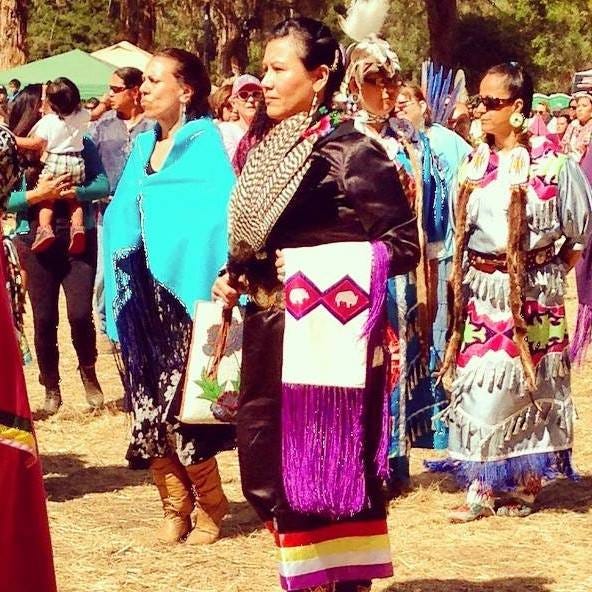
6. Jessica Skye Paul
Native Affiliation: The Nez Perce Tribe and Lakota from Standing Rock
Jessica Skye Paul is an enrolled member of the Nez Perce Tribe from Northern Idaho and Lakota, from Standing Rock in North Dakota. Since July 2010, she has worked at Facebook, where she is responsible for global relocation, policy, strategy, and Facebook’s global corporate housing program. She obtained her Global and Talent Mobility Specialist (GMS-T) certification from the Employee Relocation Council five years ago.
Four years ago, she founded Native@, an employee resource group for Facebook’s Native American employees. She is also a current board member at The Friendship House, a San Francisco based nonprofit dedicated to recovery and wellness for Native Americans living in the San Francisco bay area. She started her career in Washington, D.C. where she was the founding member and Assistant Vice President for a local commercial real estate firm. She also worked for the Navajo Nation policy office and Native American Consultants. She has one daughter and currently live in Northern California with my family.
What’s a challenge you’ve faced, and how did you get through it?
Imposter syndrome — I have always felt like I was lucky and that somehow someone did more for me than I did for myself. I thought that maybe I got that interview or job because of someone else, or whatever success I had, I never fully attributed it to myself. Looking back on my career in Washington, D.C. and now in Silicon Valley, there is no doubt I had and have allies, but ultimately my own intellect and abilities got me to where I am. I know now that I am responsible for my success because I know how hard I have worked to get here.
“Looking back on my career in Washington, D.C. and now in Silicon Valley, there is no doubt I had and have allies, but ultimately my own intellect and abilities got me to where I am.”
What’s something you’ve done that you’re really proud of?
Personally, I raised an amazing daughter who also works in the tech industry. I am proud of her and the fact that before tech, she gave back to our community by working for non-profits that benefited the Native community. Professionally, I continue to contribute to finding new and innovative ways to grow and scale a mobile workforce, and I take great pride in being an early contributor to such a world-class program.
What’s something that’s been on your mind this Native American Heritage Month?
I wonder if I am doing enough for my community and lifting everyone up who needs it. There is so much to do, but only so many hours in a day. Some day when I look back I hope that I will have helped pave a way for other Native people through my work at the Friendship House or my contributions working at Facebook. I want to carry on my families’ legacy of advocacy and support for our community.
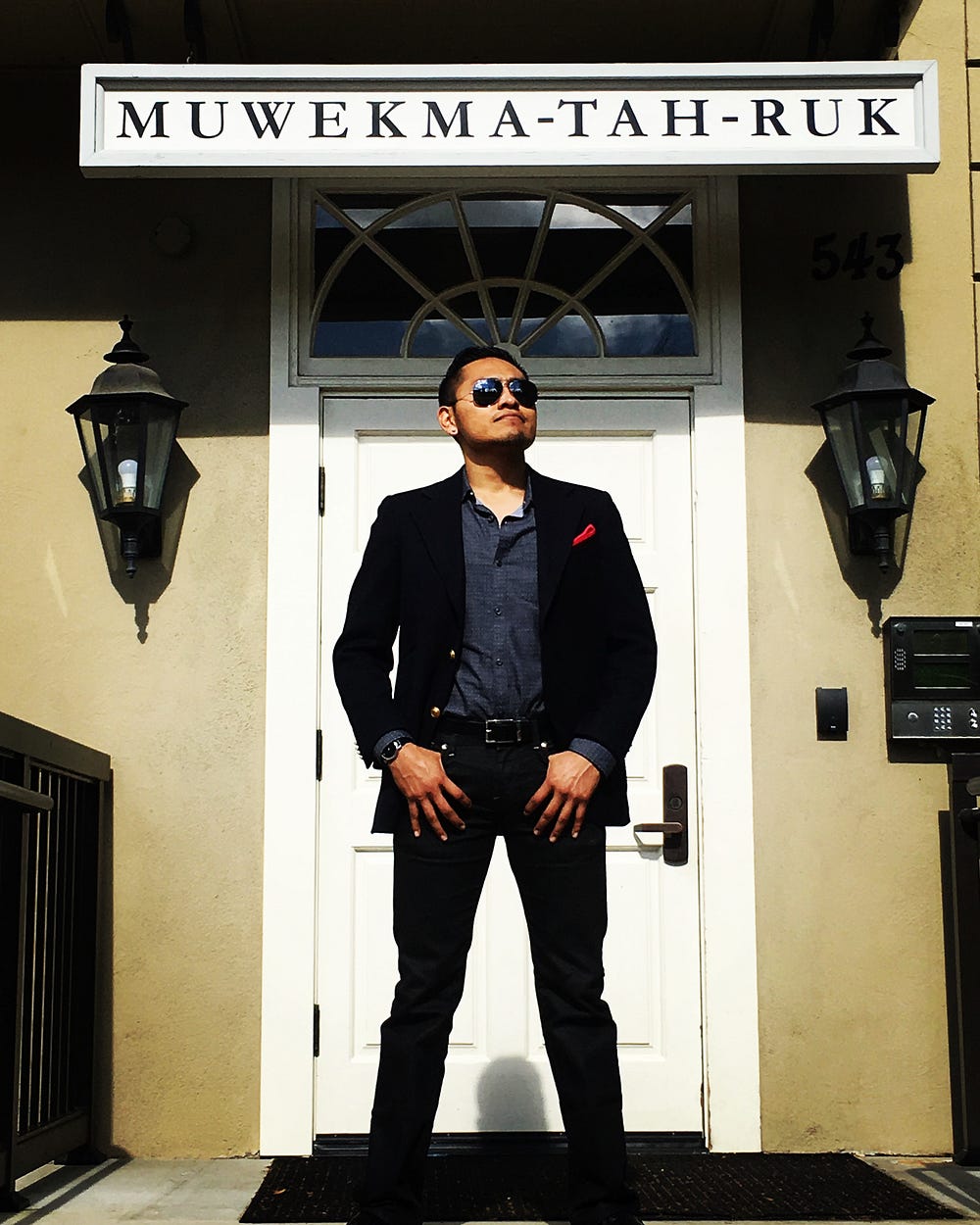
7. Joe Manuel
Native Affiliation: Akimel O’odham and Hopi
Joe Manuel is a senior at Stanford University majoring in Science, Technology, and Society and minoring in Political Science. He was raised on the Gila River Indian Community in Arizona. Joe is a former Co-Chair of the Stanford American Indian Organization and has his sights set for the biotech startup world after graduation in June 2018.
What’s a challenge you’ve faced, and how did you get through it?
In my sophomore year at Stanford, I started to become extremely apathetic about my education, and I began to lose interest in school. As a result, I ended up failing two classes, and the university put me on an academic watch. I ended up taking time off from school in order refocus and figure myself out as a person. My time off significantly helped my academic life because I returned to school with newfound purpose and skills that have helped me succeed in and out of the classroom at Stanford.
What’s something you’ve done that you’re really proud of?
I am extremely proud to be an active participant in my Native American culture. Recently, I realized that Native American culture is dying on an aggregate scale and that it is up to the newer generations to make the choice to learn the old ways. My culture is one of the most powerful forces I have ever felt, and I have learned wisdom from my culture that is super rare to find in Western culture. I often find that I can see and understand things on a holistic level that a vast majority of people cannot easily grasp. It is my duty and responsibility to ensure that the invaluable wisdom from my ancestors passes on to my children and the many generations after me.
“My culture is one of the most powerful forces I have ever felt, and I have learned wisdom from my culture that is super rare to find in Western culture.”
What’s something that’s been on your mind this Native American Heritage Month?
As we enter Native America Heritage Month, I have been thinking of methods to get Native American youth to realize that their culture is powerful beyond their wildest dreams. I highly encourage Native American youth to vehemently pursue their ancestral knowledge, protect it with passion, and teach anyone with a good heart who is willing to learn. Ancestral knowledge will significantly help you find success in your life, whether it is success in the Western model or success in the indigenous definition.
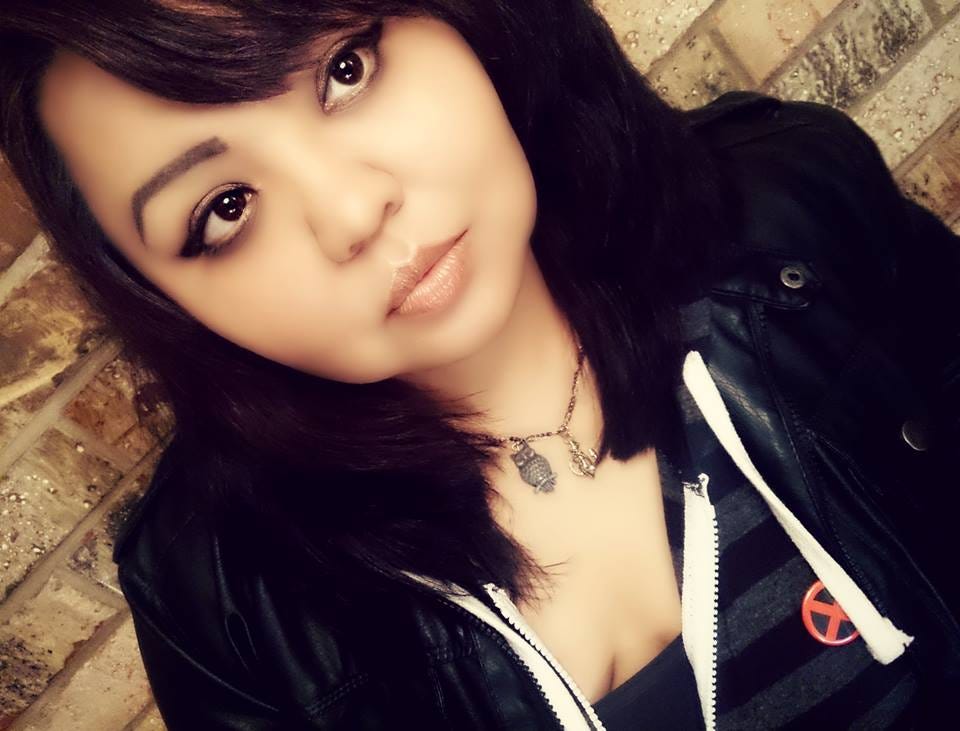
8. Johnnie Jae
Native Affiliation: Otoe-Missouria/Choctaw
Known as the “Brown Ball of Fury,” Johnnie Jae is a profoundly driven and unstoppable Indigenerd. She is a writer, speaker, technologist, advocate, community builder and entrepreneur that loves empowering others to follow their passions and create for healing and positive change in the world. She is the founder of A Tribe Called Geek, co-founding board member of Not Your Mascots and LiveIndigenousOK, co-chair for the March for Racial Justice and a member of the Women Warriors Work Collective. Jae has also contributed to Native Max Magazine, Native News Online, Complex, Good Men Project and the Success Native Style Radio Network.
What’s a challenge you’ve faced, and how did you get through it?
There’s a meme I see being shared pretty often that says, “If life just got a little bit harder, it probably means you leveled up.” I joke that if that’s the case, I’m probably at level 1 billion due the challenges that I’ve faced as someone living with Lupus, as a suicide survivor, and as an Indigenous woman living in a society that has rendered us invisible on our own lands due to the hypervisibility and acceptance of native mascots and stereotypes. It’s not easy to overcome any of these challenges, but I get through because my blood flows with the resilience, strength, tenacity and revolutionary love of my ancestors who came before me, who fought, sacrificed and prayed for my survival and my success before I was even conceived.
So, I face every challenge head-on, and I’ve been very fortunate because with nothing to very little along with my determination and desire to see Native people rise and thrive, I’ve been able to create platforms that elevate Native voices and highlight our contributions, that celebrate our achievements and acknowledge the challenges that we face as Native people. I believe the more voices that we have speaking up, the more empowered we become to reclaim, restore and revive our narratives, languages, histories, and legacies. It hasn’t always been easy and I still struggle tremendously, but nothing in life worth having or worth fighting for has ever been easily gained.
“My blood flows with the resilience, strength, tenacity and revolutionary love of my ancestors who came before me, who fought, sacrificed and prayed for my survival and my success before I was even conceived.”
What’s something you’ve done that you’re really proud of?
I am extremely proud of A Tribe Called Geek and the space that we’ve been able to create to elevate our existence and contributions within geek culture and STEM; to celebrate our Indigenerdity. The fact that we had the honor of co-sponsoring the first Indigenous Comic Con with Native Realities just really validated our path and belief that there is a desire and a market for authentic Native representation and stories within mainstream pop culture. A Tribe Called Geek also gave me another avenue to help our youth through #Indigenerds4Hope, our suicide awareness/prevention initiative. Working to eliminate the stigma of suicide and mental illness is incredibly important to me as a suicide survivor, and being able to do so while also encouraging and empowering our youth to be Indigenerds and to get involved with STEM is truly a blessing.
What’s something that’s been on your mind this Native American Heritage Month?
Native American Heritage Month is always a plethora of thoughts and feelings. On one hand, you’re excited because this is the one time throughout the year that we get the mic and opportunities to talk about our history and our experiences as contemporary Native people. We get to showcase our talents and contributions, and we get to introduce the world to who we are beyond the stereotypes and mascots. On the other hand, you know that we will inevitably be starting the month off addressing the hypersexualization of Native women and the mockery of our identities and culture that happens every Halloween. Without even a pause, we go right into addressing the fallacies of Thanksgiving and the harm of culturally inappropriate lessons being taught in schools. In the end, Native American Heritage Month is a bittersweet time for many of us because one month just isn’t enough time to make the progress we want to make.
“Native American Heritage Month is a bittersweet time for many of us because one month just isn’t enough time to make the progress we want to make.”

9. Jonathan Fisk
Native Affiliation: Taíno
is a first-year PhD student at University of Hawaiʻi at Mānoa in the Department of Natural Resources and Environmental Management, and got their B.S. and M.S. in Earth Systems at Stanford University. He was born and raised in Long Beach, California, but always has the island of Puerto Rico on their mind. In the little spare time they have, Jonathan loves writing about politics, cooking with heinous amounts of garlic and cilantro, scrolling aimlessly through social media, and doing anything that involves the oceans.
What’s a challenge you’ve faced, and how did you get through it?
One of the most insidious and recurring challenges I’ve faced is truly believing in myself and all that I’m capable of. As a queer, genderqueer, disabled, Indigenous person I’m both constantly under a microscope yet constantly erased — and this is especially true in academia. The constant stares reminding me that I don’t belong; the continual interrogating about why my work on reclaiming traditional natural resource management practices is important; the countless nights of ignoring deteriorating mental health, as another name becomes a hashtag, in order to meet unforgiving deadlines. Our worth as academics are almost solely based on what we can produce, which is starkly against my personal beliefs, forcing me to shave off the edges of my square peg personhood to fit into the round hole of academia.
It wasn’t until I finished my M.S. Thesis that my imposter syndrome started to lift — 150 pages of theoretical ecology and statistical modeling, something I wouldn’t have even believed I could produce just a year before. And now I’m working on a PhD, refusing to let myself be daunted by my dissertation looming on the horizon. The only reason I got this far is because of the constant and unending love and support from all of my friends and community members — all of my family, blood and chosen, who encouraged me to push myself harder and love myself more than I could’ve imagined. After years of struggling, I finally feel the right to call myself a scientist, and a damn good one at that.
“As a queer, genderqueer, disabled, Indigenous person I’m both constantly under a microscope yet constantly erased — and this is especially true in academia.”
What’s something you’ve done that you’re really proud of?
Over the last year I’ve learned just how much I love teaching. There’s something magical about seeing the gears turn in someone’s head until their eyes light up when they finally have a critical learning moment. This is especially true as I’m teaching STEM classes, which often exclude and discourage students along lines of race, gender, ability, etc. However, as a teacher I find it my role to prepare material that’s accessible and engaging for my students, and to create a welcoming and collaborative environment both inside and outside of the classroom so that my students feel comfortable seeking me out for however much assistance they need. I’m proud that, through teaching, I’m not only able share my knowledge but also my love for learning.
What’s something that’s been on your mind this Native American Heritage Month?
One thing that’s been on my mind as we enter Native American Heritage Month is the power of being unapologetic in who we are, what we believe in, and how we act and think. As a Native scientist, I’m constantly aware of how I’m pressured to conform myself and my work to appease respectability politics and skewed notions of worth. Conforming would mean sacrificing fundamental pieces of who I am in order to gain favor in a system stacked against me regardless. It’s the same system that created and justified chattel slavery, biological essentialism, eugenics, the pathologization of anyone who isn’t cishet and neutrypical, and the criminalization of any culture or action that threatens colonial powers.
It’s crucial that I insert my own culture and authentic voice into my work in order to subvert this exclusive and oppressive system that is academia. This means using methodology that draws upon Taíno knowledge systems rather than an impersonal and acontextual colonial methodology. This means constantly reflecting on how I can use my work and my academic privilege to help my communities. And most importantly, this means working to dismantle the systems that make education wildly inaccessible and equate people’s worth as intellectuals with their academic background (thus erasing the knowledge and insight imbedded within Indigenous cultures.)
“It is crucial that I insert my own culture and authentic voice into my work in order to subvert this exclusive and oppressive system that is academia.”
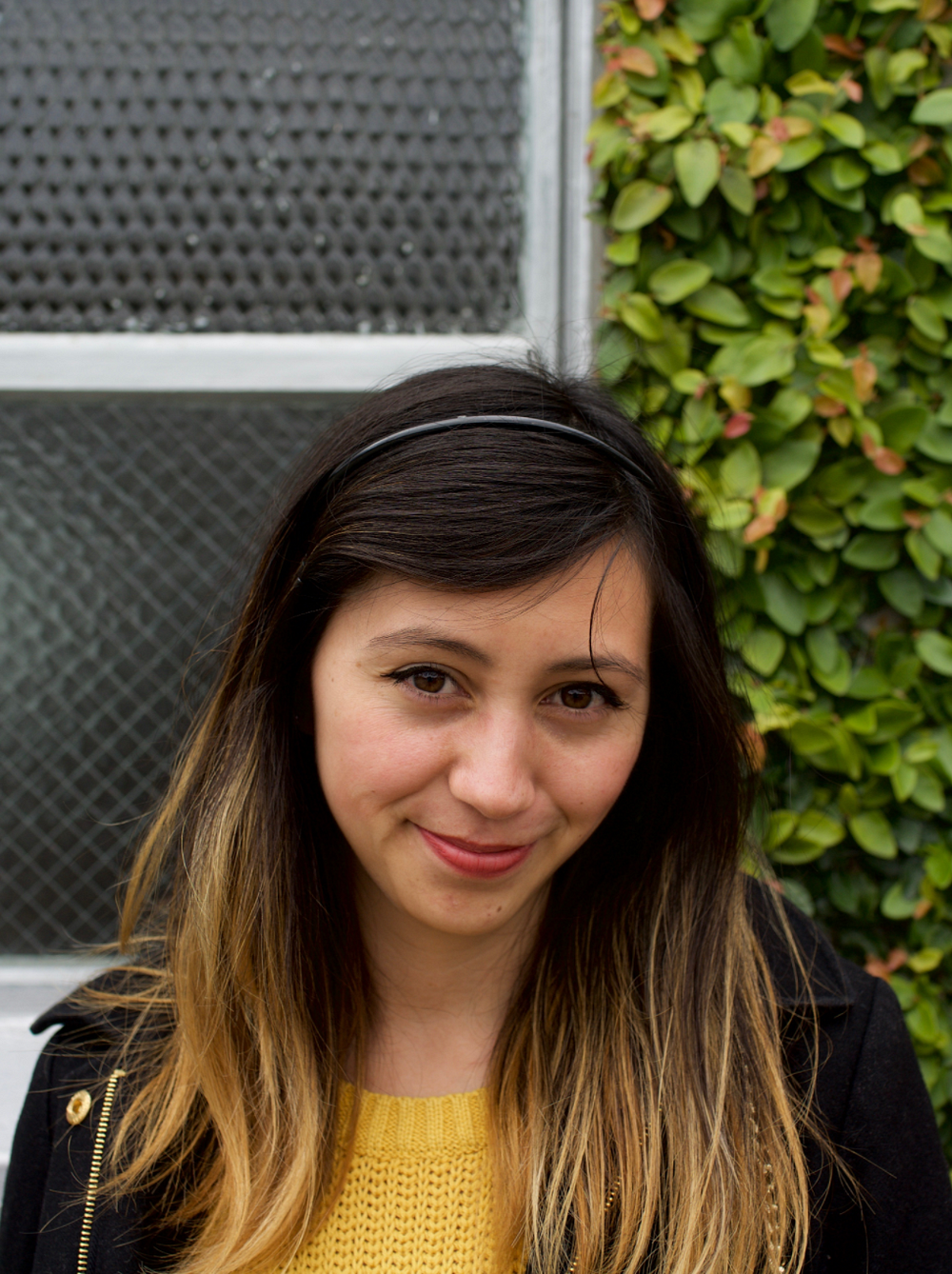
10. Kat Li
Native Affiliation: Anishnaabe
is a product person, who most recently led the product team at Digit, a popular automated savings tool that lets customers ‘set and forget’ savings with a simple messaging-based user experience. She previously worked at Quora and Stripe, and is a graduate of Stanford University where she studied linguistics and psychology.
Aside from designing behavior-changing products, her passions include recognizing and reversing patterns of oppression, indoor gardening, and DIY crafting.
What’s a challenge you’ve faced and how did you get through it?
Sometimes I still can’t believe I’ve made it to where I am today — there were times I really came close to giving up. The tech industry can be brutal and I fought hard to get here: it required all of my conviction to keep myself convinced and then convince others that I am capable of being a product lead. Occasionally I’ll hear stories of people who Alice-in-Wonderlandish stumbled upon product management serendipitously and ended up loving it. Even today I’ll occasionally meet new PMs who fell into the role without knowing what they were signing up for. That’s certainly not an experience that I can personally identify with, but it was worth it to get here. Product management is the perfect blend of skills and duties that I’ve been working towards all along. If this resonates with you, keep at it and be willing to be in it for the long game.
What’s something you’ve done that you’re really proud of?
I’m extremely proud of building and leading a strong product team comprised of women and people of color. Every positive work interaction with someone from a background unlike your own develops your sense of trust and common context, breaking down barriers of ignorance.
“I’m extremely proud of building and leading a strong product team comprised of women and people of color.”
What’s something that’s been on your mind this Native American Heritage Month?
I can’t stop thinking about how as representatives of our tribes and cultures in the tech world, we have a great responsibility to remember our families and friends, and to build products that will enrich the lives of Native and indigenous peoples both back home and across the world.
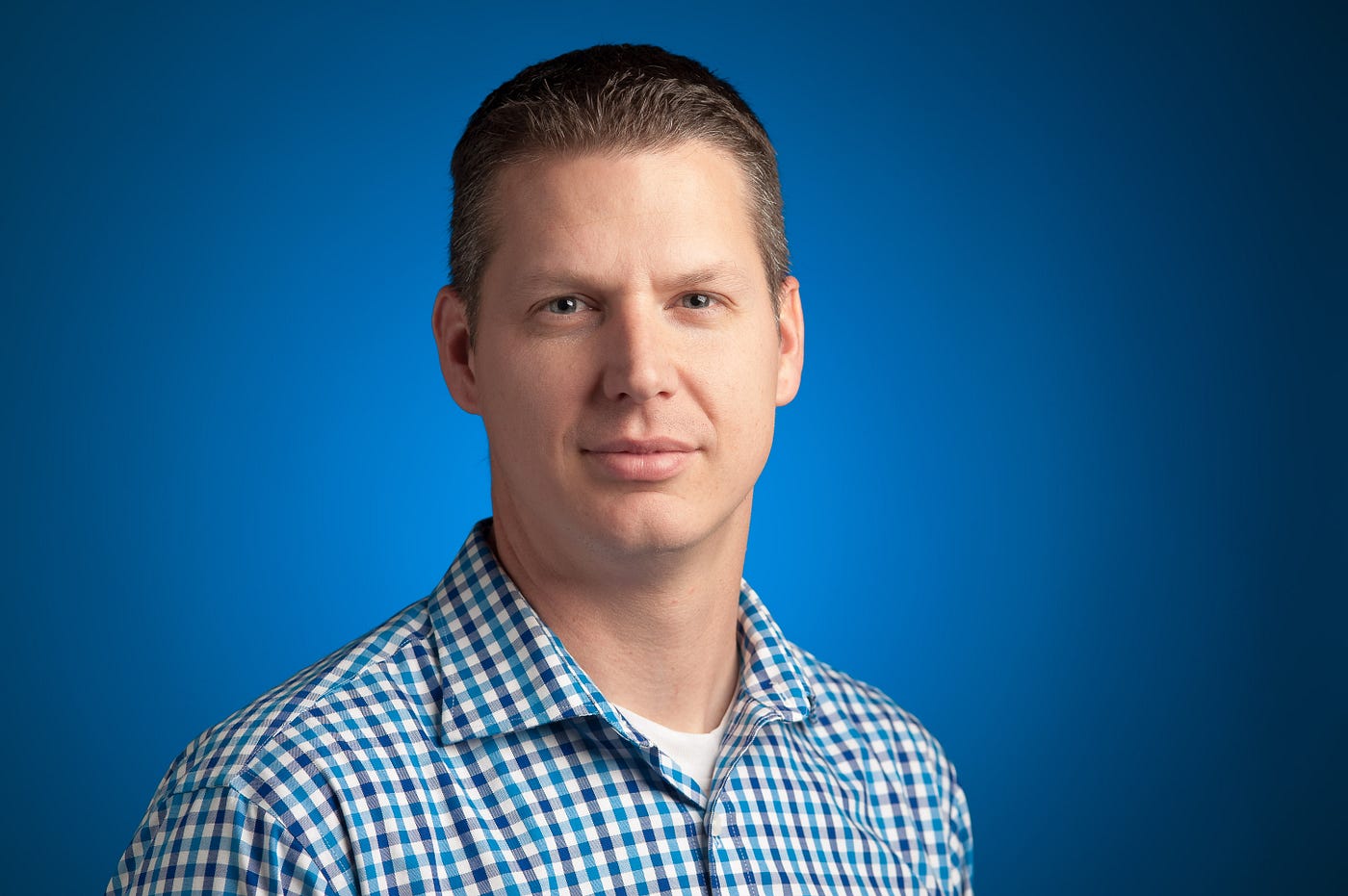
11. Kris Easton
Native Affiliation: Cherokee Nation of Oklahoma Tribal Member
Kris Easton is an Operations Program Manager for Google’s Project Fi, lead for the Google American Indian Network (GAIN), and a trustee for the Smithsonian National Museum of the American Indian. He was born in southern California, but studied in Texas.
What’s a challenge you’ve faced, and how did you get through it?
I’ve always yearned for closer connection with my Native heritage. Since my grandparents left the tribal community to find work before I was born, I feel too often like an occasional Indian, so I often seek to be connected with other Natives living “off-Res.” When I came to Google from Texas where there was a local Cherokee chapter, I felt even more disconnected, so I joined the Google American Indian Network (GAIN). Unfortunately, I soon found it felt like a ghost town. The network was without sponsorship, members, or identity. That’s when I felt the most alone. I knew that if I did nothing, others would feel the same. So while I was nearly drowning in my new job, I reluctantly stepped forward to rebuild our network. Over a few months of late hours and no little amount of extra anxiety, we were reorganized. I asked a lot of question from anyone who would answer, and followed leads until the organization was in place, and a few partnerships sprouting. With so few in number, I knew our network would never be like the others with social gatherings and typical network activities, so we focused instead on influencing Google leaders and products. Now with 150+ members in our network today, we maintain that focus on impact to our company but also look to spread that influence externally, and we have a good time doing it, and in good company.
What’s something you’ve done that you’re really proud of?
Nothing is ever done or accomplished alone, at least in my opinion, but one thing I am particularly glad to have been a part of was the introduction of Tribal reservations on Google Maps. For Tribal reservations to be recognized on that map, and treated the same as was any other nation or municipality was more to me than symbolic. It was a notice that we are still here.
“For Tribal reservations to be recognized on that map, and treated the same as was any other nation or municipality was more to me than symbolic. It was a notice that we are still here.”
What’s something that’s been on your mind this Native American Heritage Month?
I often return to the digital divide, and the widening gap. I’m mindful that so many Native youth living in tribal communities feel that they have to chose between their community and a thriving career someday that enables them to provide for their families. I earnestly believe that technology will be one of the key ingredients to maintain our cultures, and allow us to find lucrative careers and make meaningful contributions without having to leave. Tools only work with hands to use them, and I want to see more technology in the hands of Native youth.
“I’m mindful that so many Native youth living in tribal communities feel that they have to chose between their community and a thriving career someday that enables them to provide for their families.”
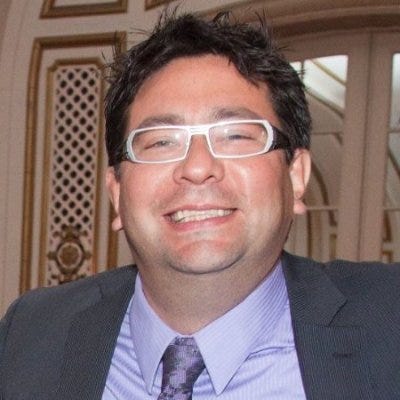
12. Luke Lightning, PhD
Native Affiliation: Buffalo Point First Nation
Luke Lightning is Managing Partner at LAUNCH, which produces the podcast “This Week in Startups” and the annual LAUNCH Festival technology startup event. LAUNCH’s Incubator, Founder University, and SmartCamp programs help drive LAUNCH’s mission to support founders and inspire innovation.
Previously, he was an Associate Director of Research at a biotech company, ARYx Therapeutics, that conducted research and clinical trials in the areas of cardiovascular, gastrointestinal, and neuronal diseases. He has been an Assistant Professor at Purdue University, worked as a Postdoctoral Scholar at UCSF, and obtained his PhD in Medicinal Chemistry at the University of Washington. He is also the lead organizer of Native American Heritage Night with the SF Giants and Oakland A’s and on the board of the Multicultural Alumni Network of Carleton College. He lives in San Francisco and is a member of the Buffalo Point First Nation Ojibwe tribe located near the border of Minnesota and Manitoba.
What’s a challenge you’ve faced, and how did you get through it?
A significant challenge during my career was making the transition from a science career in biotech to a sales role in technology. I have been very fortunate to have amazing mentors and family support around me during my career. These awesome folks helped me navigate my new career choice and provided me with actionable feedback on my ideas. I discovered that most people are willing to help and offer advice, you just have to get out there and do the work, do the research, and ask thoughtful questions. I still work very hard at developing and nurturing my professional and personal network as it’s been very important for me and my career.
What’s something you’ve done that you’re really proud of?
I’m proud of the work the team putting together Native American Heritage Night with the SF Giants has done with me over the past 5+ years while also raising funds for Bay Area-based Native American non-profit groups.
What’s something that’s been on your mind this Native American Heritage Month?
After participating with the very large Native American crowds at the Alcatraz Sunrise Ceremonies and the Native American Heritage Night with the SF Giants the past few years, I am hopeful we will see more Native Americans in the technology and biotech fields out here in the Bay Area. And, when that happens, I hope to meet them and, if asked, help them out as a mentor as so many others have done for me.
“I’m proud of the work the team putting together Native American Heritage Night with the SF Giants has done with me over the past 5+ years while also raising funds for Bay Area-based Native American non-profit groups.”
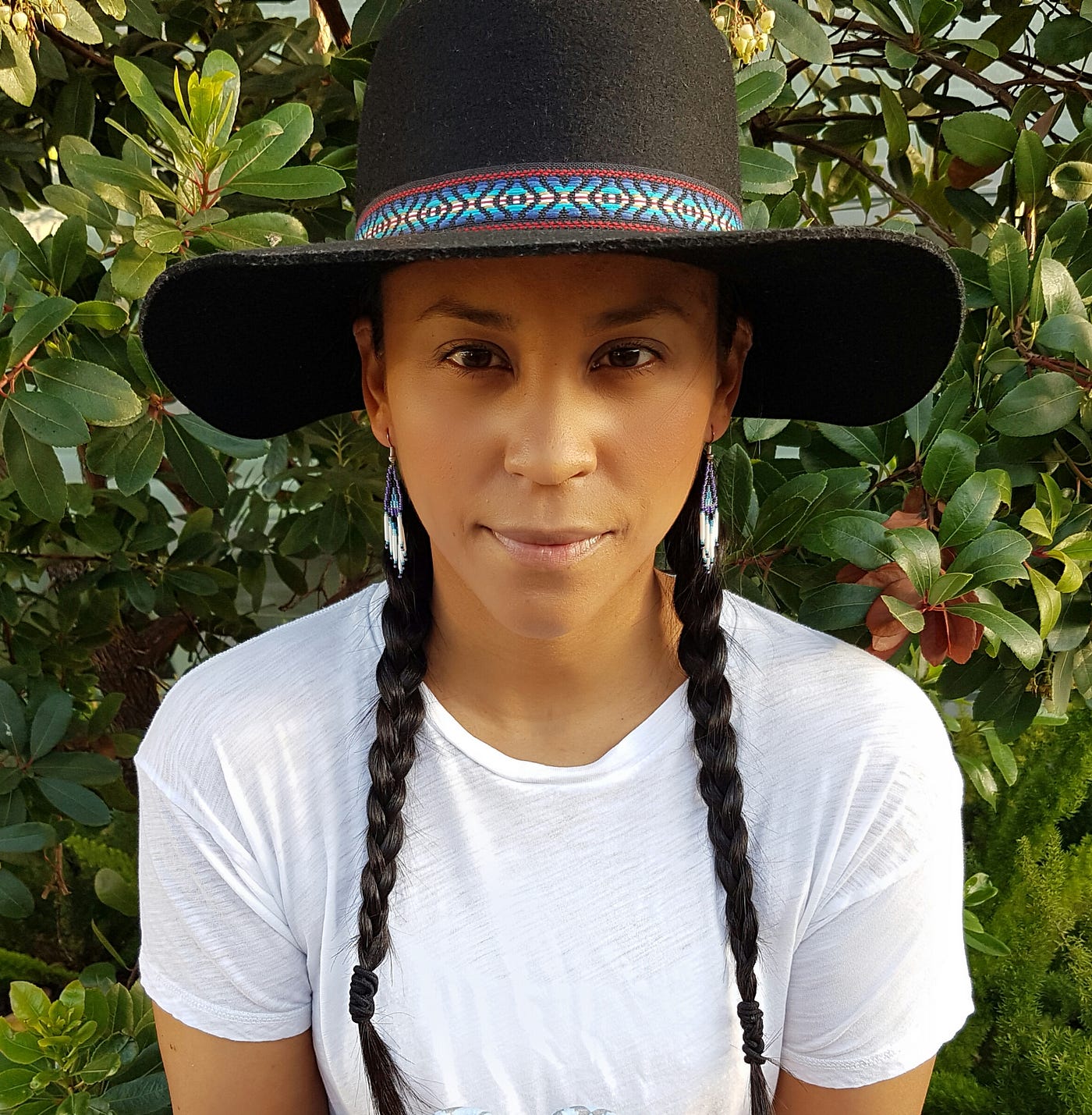
13. Maria Running Fisher Jones
Native Affiliation: Blackfeet
Maria Running Fisher Jones is an attorney at Google where she serves as both product and commercial legal counsel for Google Cloud Platform. She is also the co-founder of TPMOCS, an ecommerce children’s brand that specializes in the production of authentic children’s moccasins made by Native American artisans. The sale of each pair enables TPMOCS to give back to Native American communities. She is from the Blackfeet Indian Reservation in Northwestern Montana. You can follow Maria’s passion on Instagram @tpmocs.
What’s a challenge you’ve faced, and how did you get through it?
A challenge has been overcoming imposter syndrome. I am often the only minority in the room and in the past I have found myself questioning whether I belong. I have been able to overcome by surrounding myself with amazing and inspiring mentors who have experienced this themselves. Finding community has been pivotal, and I weather difficult days knowing that I am in a position to do the same for others.
What’s something you’ve done that you’re really proud of?
I am very proud of my educational accomplishments. Statistically, Native Americans have the lowest educational attainment rates of all ethnic and racial groups in the United States with only 13.8% earning a college degree. I am fortunate to have earned both a bachelor’s and master’s degree, as well as a law degree. Through education, I have had the opportunity to work for top-notch tech companies including Microsoft, Oracle and Google.
What’s something that’s been on your mind this Native American Heritage Month?
During this month I am reminded that it is an opportune time to educate others about the uniqueness of the many tribes and to raise awareness about the challenges Native people have faced both historically and in the present. We are here, we are resilient and we continue to thrive and persevere.
“We are here, we are resilient and we continue to thrive and persevere.”
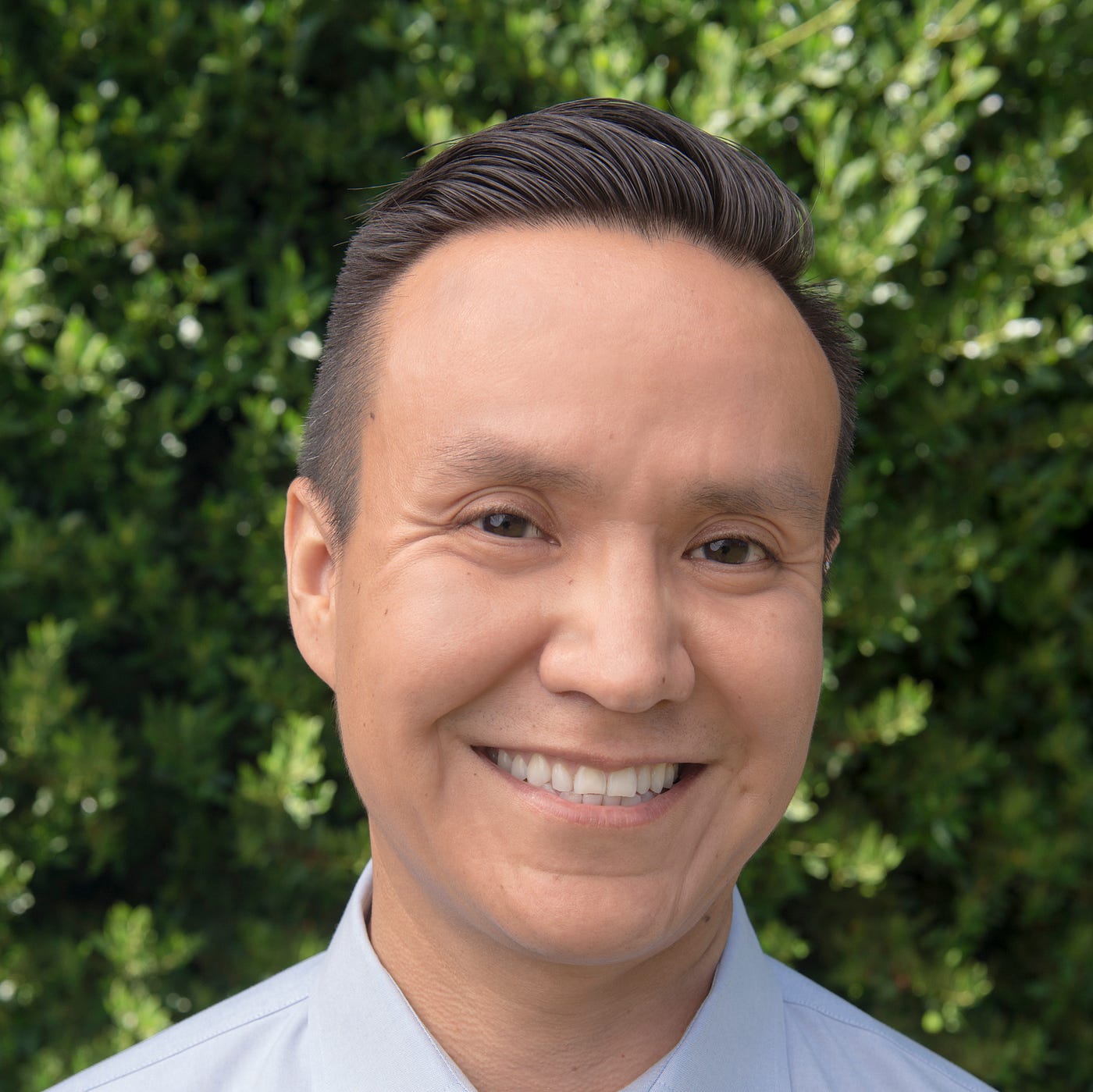
14. Matthew Yazzie
Native Affiliation: Diné (Navajo)
is the Founder & CEO of the nonprofit, Others Project; the first real-time, consolidated, and open-source initiative dedicated to Diversity + Inclusion data. He grew up on the Navajo Nation in Northwest New Mexico and studied Computer Science at San Juan Community College before transferring to Stanford University for his B.S. degree in Management Science & Engineering. Matthew worked as COO at Jurispect, a regulatory FinTech compliance company. Previously, he worked towards intelligent immigration reform as COO of FWD.us and was on the Global Ethics and Compliance founding team at Google, where he had responsibility for training and investigations, metrics, and compliance technology procurement. Matthew currently serves as an Advisor to the Board for
.
What’s a challenge you’ve faced, and how did you get through it?
The lack of Native American representation in the tech industry has been a challenge that I faced and continue to face throughout my education and career. I grew up in a small community that felt completely removed from Silicon Valley and tech. Because of the amazing teachers and mentors in my life, I was fortunate enough to gain a wide range of viewpoints that helped highlight opportunities I didn’t even know existed. Even now in the Diversity + Inclusion space, most of your top tech organizations report Native and Indigenous employees as “Other” in their annual diversity reports. I’ve found that the lack of acknowledgement for those in our community can only be counterbalanced by other Native tech leaders speaking up and telling their story about their journeys to tech.
What’s something you’ve done that you’re really proud of?
One of the proudest moments of my professional career was receiving an email to join the Advisory Board for Project Include from
. While the work I’ve done for Native American Diversity + Inclusion in tech has always been rewarding, I’ve always felt a majority of the time our voices lacked enough Native American representation to resonate as an agent for change across a broader audience. Having a seat at the table and advocating for a “reset” in how we think about and tackle these issues has been some of the most meaningful Diversity + Inclusion work I’ve ever done. Combining metrics-based business practices in measuring the success of values-driven diversity goals within tech organizations has been both challenging and exciting.
What’s something that’s been on your mind this Native American Heritage Month?
Sadly, I’m reminded how little the average American knows about Native American history and culture. The hundreds of unique tribes, languages, and dialects that made up our nation before European expansion feels like it has been lost to one simplified, romanticized story that fits nicely in the Manifest Destiny narrative. Until we begin acknowledging the issues of the past and start properly teaching Native American history and heritage in our schools, we won’t be able to begin providing comprehensive solutions for improving the future for Native communities together.
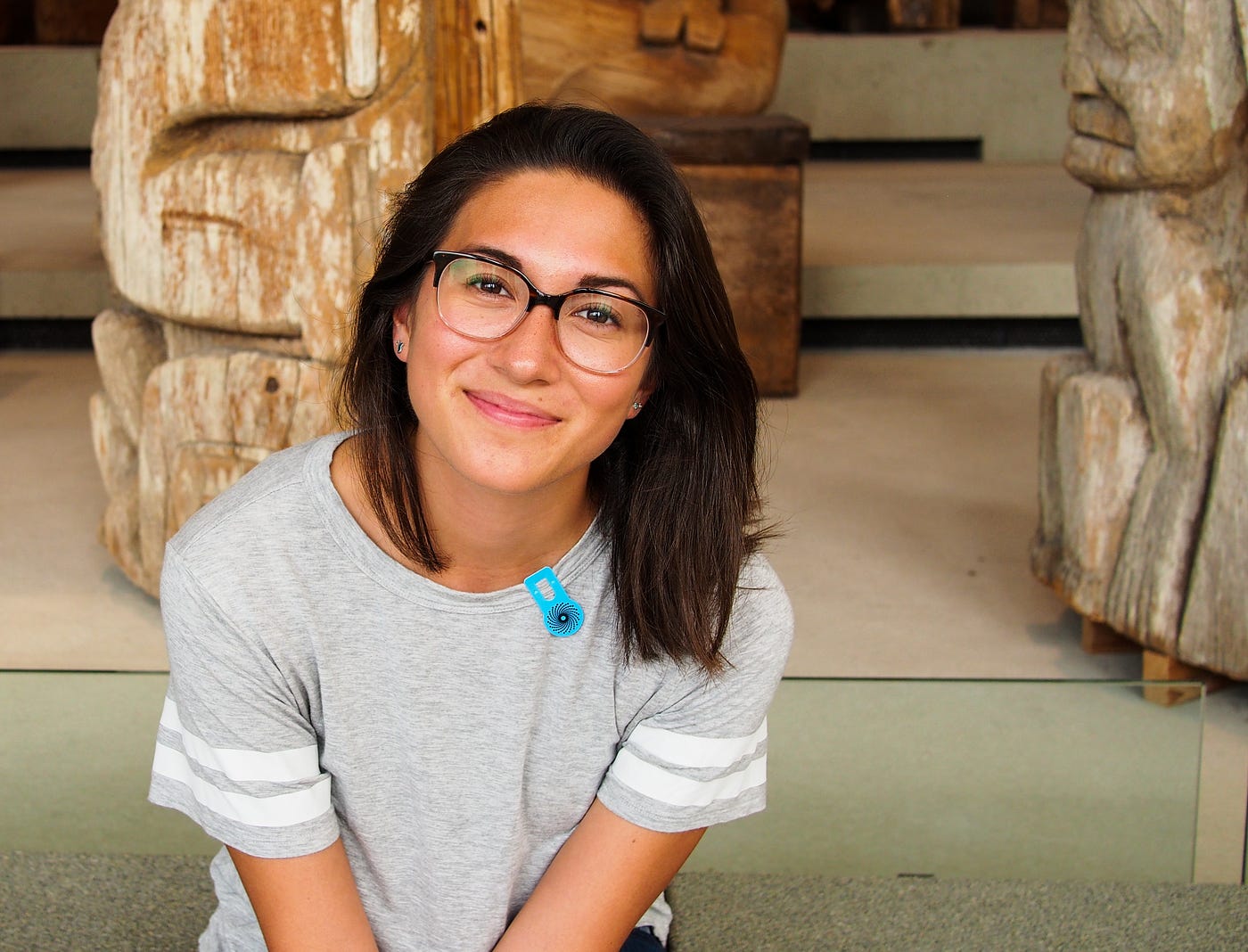
15. Meredith Burkle
Native Affiliation: Native Hawaiian
Meredith Burkle recently completed her Masters in Electrical Engineering at
and is now living in San Francisco.
What’s a challenge you’ve faced, and how did you get through it?
A challenge I’ve faced is evaluating and re-evaluating my Indigenous identity, and understanding that it’s ok (and a fact of life) for identity to be nebulous. When I was little, I would tell people (when asked that fateful “What are you?” question) that I was “Hawaiian, well, Japanese-Chinese-Hawaiian-Scottish-German-and-French.” (I had no idea what people expected when they asked that question, so I guess I was going for exactness?) Now, I’ve kind of reversed on that and identify as Indigenous, or if I’m being specific and speaking about my personal experiences, I’ll say Native Hawaiian. So many smaller moments contributed to that decision — like realizing that my Chinese and Japanese heritage is a direct result of Hawaiian colonization and indentured labor on sugar cane plantations, or learning about the similarities between oppressive tactics used on Hawaiians and those used on Native American tribes throughout the mainland US, or traveling to Peru and Bolivia and seeing the parallels between suppression of the indigenous Quechua language, and the banning of the Hawaiian language in the early days after the overthrow of the Hawaiian kingdom.
There is a beauty in specificity, but (or and) there is power in universality — allowing for a common label enables us to recognize the larger patterns of oppression and overcome them, while providing solidarity and support and collective intelligence. I’m still kind of refining those definitions and adjusting my specific word choice, but that idea of identifying myself in a way that acknowledges connections between Indigenous narratives is kind of what I’m going for at the moment.
“A challenge I’ve faced is evaluating and re-evaluating my Indigenous identity, and understanding that it’s ok (and a fact of life) for identity to be nebulous.”
What’s something you’ve done that you’re really proud of?
There was a period of about two weeks where I made my bed every day before work. That was pretty hype.
What’s something that’s been on your mind this Native American Heritage Month?
Cultural preservation, perpetuation and innovation.
Cultural preservation is great and it’s good to honor and preserve certain ancestral ways of life, but it’s also important to not be stuck in the past.
Perpetuation as I see it in practice is more sustainable, and it’s so awesome to see new traditions being formed, Hawaiian immersion schools popping up, education that specifically addresses Hawaiian history, etc., and I really hope things continue to move forward in that vein.
And then I’m not sure if “cultural innovation” is a real term, but I guess I’m just thinking about how Indigenous peoples can get to a place where they can forge their own way and create their own radical, unique, and distinctly Indigenous responses to problems they’re facing.
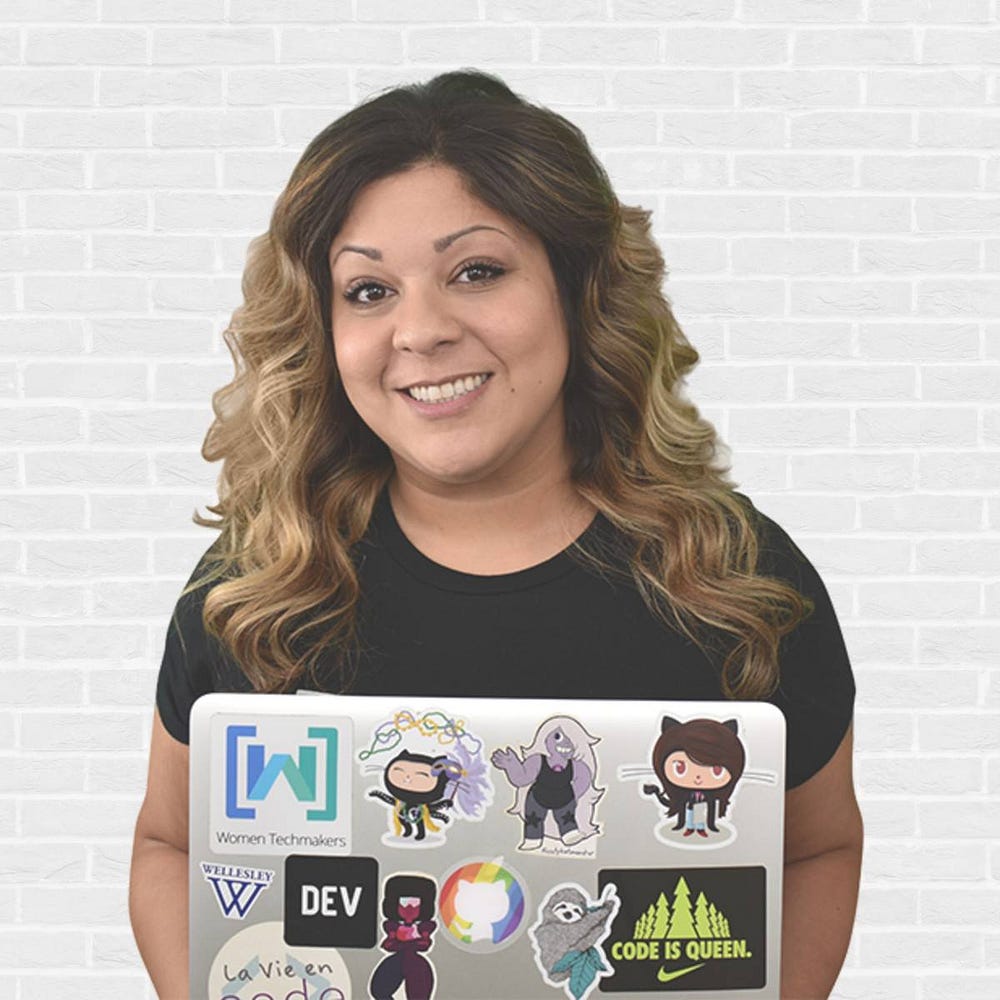
16. Nicole Archambault
Native Affiliation: Wampanoag/Pokanoket Nation
is a self-taught web developer and educational technology entrepreneur. She is also the creator of La Vie en Code, a podcast, blog, and online course school dedicated to helping other self-taught web development students prepare for their self-education and career transition. Nicole is based in Boston, Massachusetts, where she has also been heavily involved with the online alumnae community of her alma mater, Wellesley College.
What’s a challenge you’ve faced, and how did you get through it?
Virtually everything I’ve faced to date has been a challenge, if we’re being honest. But the biggest challenge I’ve faced is one I’m currently putting myself through: becoming brave. Bravery seems to be uncommon with many women I meet in my day-to-day, but I’m working to surround myself with brave, strong women who aren’t afraid to use their voices.
Somewhere along the line, I started developing intense anxiety about writing and sharing my perspectives with others. I felt Imposter Syndrome in regards to my knowledge and depth of knowledge. As a perfectionist, it led me to believe that if I couldn’t do it the best… I shouldn’t bother trying to do it at all. Over the past few months, I’ve come a long way in recognizing and leveraging my fear to propel me toward bravery. I practice leaning into the discomfort of the obstacle, and I’m just beginning to find my own voice. And I’m proud to say it’s even louder than before, and now, what I have to say is even more valuable.
“ I practice leaning into the discomfort of the obstacle, and I’m just beginning to find my own voice.”
What’s something you’ve done that you’re really proud of?
I am incredibly proud of the fact that I’ve grown into an emotionally intelligent entrepreneur. What this means to me is that I can trust my judgment and know that I am able to make complex or difficult difficult decisions for my business and my life. I trust that when I hit the extent of my knowledge in an area, I know when to seek outside assistance. Overall, the growth in my skills has led to a growth in my business as I enter the launch of my first online course: the only prep course for web development career changers on the market.
What’s something that’s been on your mind this Native American Heritage Month?
I wasn’t previously aware of Native American Heritage Month. It isn’t something that Native communities really celebrate, but I believe that the opportunity to tell our stories is a great step in the right direction. The world’s perceptions of indigenous people in general have been deeply scarred by years of bending history and painting it the way others wanted it to look. Whatever was most palatable. This is why it’s so important to shine a light on Native Americans themselves — we are telling the stories the way they actually happened, passed down through oral tradition and through the early translations of settler interactions. Our distinct heritages have been irreparably altered by a common force of colonialism, and that is a fact.
“We are telling the stories the way they actually happened, passed down through oral tradition and through the early translations of settler interactions.”

17. Tara Astigarraga
Native Affiliation: Choctaw Nation of Oklahoma
Tara Astigarraga joined IBM in 2001 and is currently working in IBM Watson Research focused on designing and building one of the first Enterprise Blockchain Solution Implementations. Tara is an IBM Master Inventor with 65+ Patents filed and a passionate mentor for STEM K-12 outreach. She spent the first 10+ years of her career in IBM Systems group focused on Enterprise Storage, Server and Networking Solutions. Tara is an enrolled member of the Choctaw Nation of Oklahoma and a member of the IBM Native Diversity Council. She is married to husband Julio, and they have two daughters; Gabriela, 12, and Alexis, 9.
What’s a challenge you’ve faced, and how did you get through it?
Early in my career at IBM I got selected for a one-year growth assignment. Upon accepting the role I quickly felt I was in over my head. Luckily I was surrounded by a supportive network of peers who helped me to adapt and quickly develop the skills needed to succeed in this role. This experience taught me the value in adaptability and just-in-time learning, two skills that I continue to leverage in my career today.
What’s something you’ve done that you’re really proud of?
I was the first in my family to graduate from college and later went on to obtain my masters degree shortly after the birth of my first daughter. This was a big accomplishment for me and made me more confident to set bold goals for my career and future.
What’s something that’s been on your mind this Native American Heritage Month?
For me, NAHM is a great reminder to reflect on the past and to push forward for the future. November always seems to be the month that re-ignites my passion for mentoring and K-12 STEM engagements.
“I was the first in my family to graduate from college and later went on to obtain my masters degree shortly after the birth of my first daughter.”
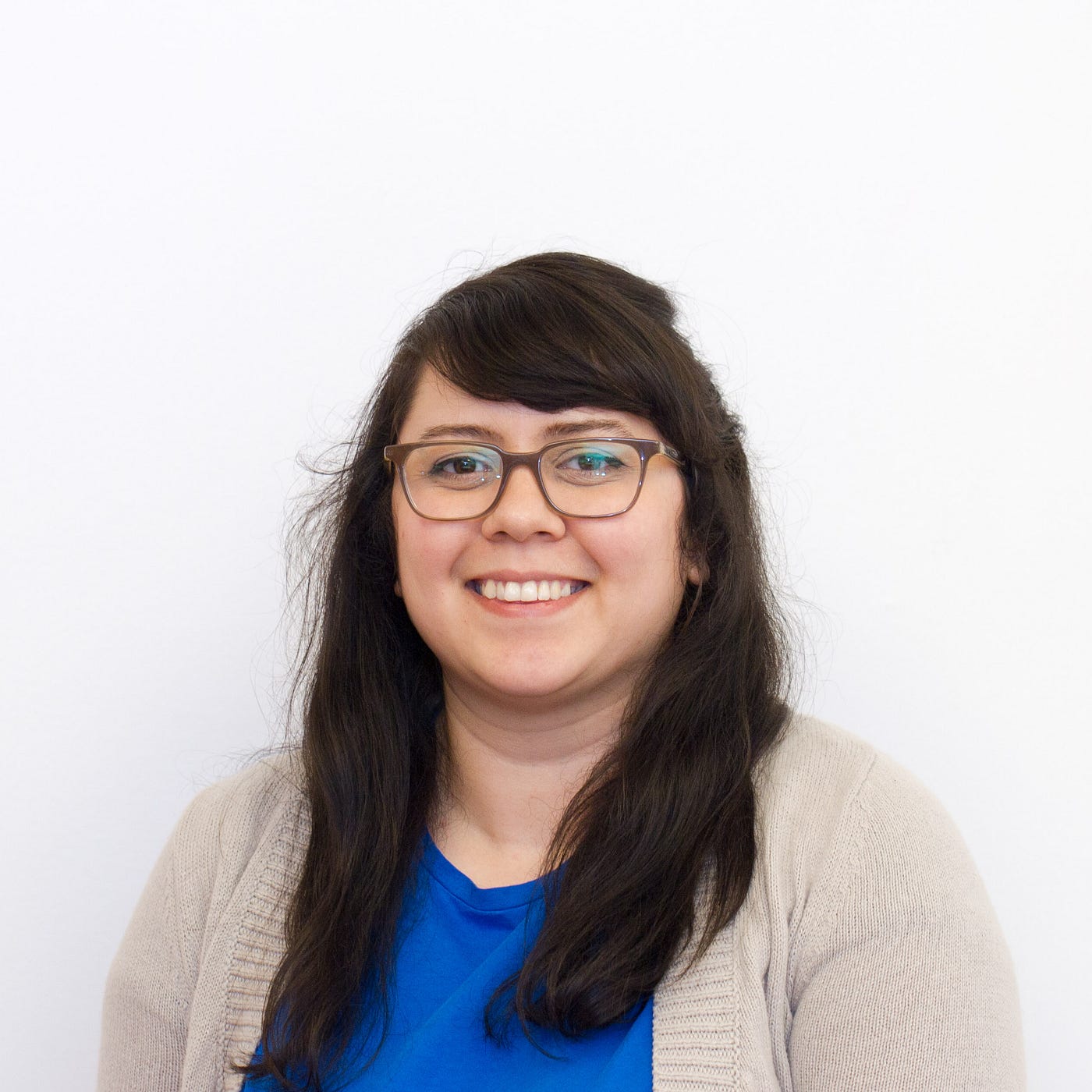
18. Taraneh BigBow
Native Affiliation: Kiowa Tribe of Oklahoma
Taraneh BigBow is a Kiowa Native from Oklahoma. She was awarded a full scholarship from Facebook to attend a bootcamp in San Francisco in 2016. Since graduation, she is happy to finally be a software engineer and completed her first apprenticeship at Microsoft in 2017.
What’s a challenge you’ve faced and how did you get through it?
My biggest challenge has been getting my start in a software engineering career. It’s always been huge financial strain to attend college. I was very fortunate to be given a scholarship to attend a coding bootcamp in San Francisco. I finally felt like things were happening for me. The job search post graduation has been very hard. With me having zero work experience and no college degree, most companies would not speak to me. I’ve continually felt like it has been an upward battle, but coding is something I love so much. I can’t see myself doing anything else, so I have continued to push through. I think as long as you don’t give up, you’re already making progress.
What’s something you’ve done that you’re really proud of?
I am really proud that I never stopped. I had so many frustrating days and have felt completely alone in wanting this career. I do not have anyone else in my family or tribe that is in software, and I felt like this was a dream that only I had. I’m proud that I took a huge chance and quit both of my jobs and flew from Oklahoma to San Francisco to make my dream come true.
What’s something that’s been on your mind this Native American Heritage Month?
I really want to get more Natives into tech. I am from Oklahoma where we have very little tech, but a good-sized Native population. When I was in San Francisco, I loved the tech scene, but there were almost zero Natives in tech. I heard so many companies boast about their diversity yet when I asked if they had any Natives, no one could say yes. I was told by one company that I was the first Native American in tech that they have ever met. Diversity is a huge topic, but there is no focus on Native Americans. Someone even told me that he didn’t realize we actually existed.
I had to struggle to get to where I am today, and that path is still a work in progress. I want to be in a position to help more Natives get involved. People should know we exist, and we belong in any career we want to be in. I want more Natives to see tech as a possible career path, and I want to help them get there. I’m still figuring it all out myself, but when someone becomes successful, they need to reach back and help others become successful too. We are all in this together.
“I am really proud that I never stopped. I do not have anyone else in my family or tribe that is in software, and I felt like this was a dream that only I had. I’m proud that I took a huge chance and quit both of my jobs and flew from Oklahoma to San Francisco to make my dream come true.”


